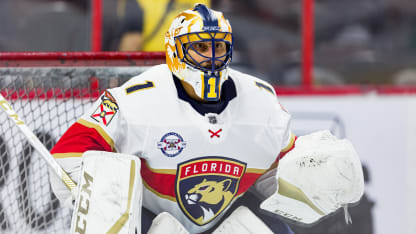Thomas Greiss of the Islanders is that one NHL goalie wearing No. 1 this season, but he said he has no deep attachment to it. Greiss wore No. 29 for Worcester of the American Hockey League but was given No. 1 when he made his NHL debut with the San Jose Sharks in the 2007-08 season because forward Ryane Clowe was wearing No. 29. His playing partner, Semyon Varlamov, wore No. 1 for eight seasons with the Colorado Avalanche but didn't express any interest in having it after signing with the Islanders during the offseason.
"No, he didn't bring it up," Greiss said of Varlamov, who wears No. 40, "but he could have it."
Others are tired of the tradition that has long seen goalies given No. 1 by default.
Laurent Brossoit said he wasn't given a choice and had to wear No. 1 for his first four NHL seasons with the Edmonton Oilers. He has worn No. 30 for the past two seasons after signing with the Winnipeg Jets in 2018.
"I just didn't like No. 1," Brossoit said. "Too many goalies have it."
They certainly used to.
Through much of the Original Six era, the expansion to 12 teams in 1967 and the increase to 21 teams by 1979-80, there are more goalies listed as wearing No. 1 each season than there were teams in the NHL. Back when teams only carried one goalie, that player was given No.1, and if he got hurt, the goalie brought in to replace him also got No. 1. When rosters expanded in the 1960s to include two goalies, the second goalie was most often given No. 30 or No. 31, and numbers between 30 and 35 also became staples of the position. But No. 1 remained the most common choice, at least until recently.







